Capsule Review: SteelSeries Apex M500 Gaming Mechanical Keyboard
by E. Fylladitakis on June 10, 2016 10:00 AM EST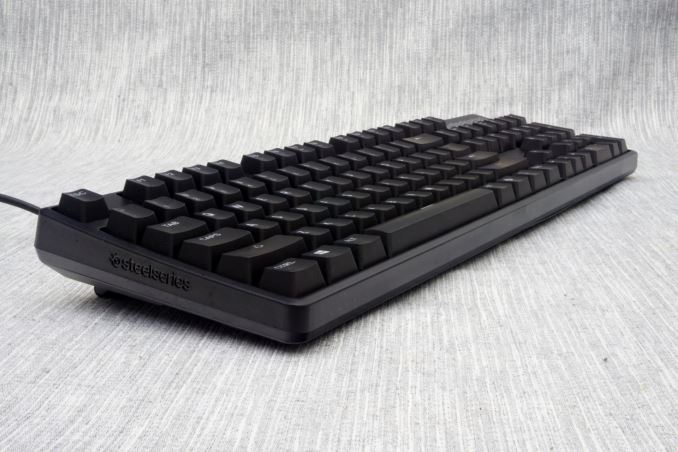
SteelSeries is one of the most reputable manufacturers of gaming-related peripherals and software. The company originates from Denmark and today has offices in the US and Taiwan. Even so, the company was a little late into the mechanical keyboards market, as they opted to focus on advanced membrane-based keyboards instead. Until recently, the company has been offering just one mechanical keyboard, the Apex M800 with their own custom QS1 switches.
The high price and, perhaps, the use of switches from an “unknown” source did do any favors for the popularity of the Apex M800, but it still had its own distinct user base. SteelSeries however is a company who is largely based and focused around the gaming community, so they rightfully felt that they ought to have at least one mechanical keyboard designed solely for hardcore and professional gamers. To that end, SteelSeries recently released the Apex M500, a high performance no-frills mechanical keyboard designed exclusively with that market group in mind.
Packaging and bundle
We received the Apex M500 in a very strong cardboard box that can withstand even the roughest of transportation services. The artwork is relatively simple, based on abstract geometrical shapes and a picture of the keyboard itself. Inside the box we only found the keyboard itself, protected inside a simply nylon bag. SteelSeries does not supply any additional parts, such as a wrist rest, extra keycaps or a keycap remover.
The SteelSeries Apex M500 Mechanical Gaming Keyboard
The designer of the SteelSeries Apex M500 truly tried to make it as simple and straightforward as possible. The body of the keyboard is plastic, with narrow rounded edges, and is sprayed with a matte black paint that is highly resistant to fingerprints. It is a standard 104-key ANSI layout keyboard with a 6.25× Spacebar and seven 1.25× bottom row keys. The keycaps are made from ABS plastic and have large, smooth characters. The company’s logo is printed at the top right corner of the keyboard, above the numpad.
Although there are no extra buttons on the Apex M500, a few additional functions are supported via the FN key that is replacing the right Windows key. While the FN key is being held pressed, the F5-F6 keys provide backlight brightness control and the F7-F12 keys offer basic media and volume controls. Other than that, the Apex M500 is just a standard 104-key keyboard. We would like to have seen at least a separate mechanism for sound volume control, but as a compromise of sorts the Apex M500 is a fully programmable model, so the user can reprogram any of the standard keys to perform such functions if that is a necessity.
For some strange reason, the designer tried to make the bottom of the Apex M500 aesthetically appealing. The plastic body forms an abstract, modern design, based on simple polyhedral shapes with rounded edges. A large, full company logo is engraved on the top left side of the keyboard’s underside. The rubber anti-skid pads are thick and very effective, providing very strong grip even on the most slippery solid surfaces. There are grooves for the routing of the cable to exit from either the center, left or right top side of the keyboard.
SteelSeries decided not to use proprietary switches on the Apex M500. The company went with the proven and very reputable Cherry MX switches instead. There currently is only one version of the Apex M500 available, with Cherry MX Red switches and blue LEDs. These switches are typically considered to be the best for gaming due to their linearity and low actuation force.
The blue backlighting of the Apex M500 is very strong and even. Blue lighting can be tiring for the human eye and the Apex M500 is blindingly bright at maximum intensity, so users will have to reduce it significantly for use inside dark rooms.
After we removed the plastic frame of the Apex M500, all that is left is the main PCB permanently attached on the blue steel frame that is supporting the keys. This is the standard and proven design of most mechanical keyboards, providing excellent mechanical cohesion and durability. The soldering job is excellent, with no flaws that we could find.
ST Microelectronics supplies the STM32F072R ARM microprocessor that is the heart of the Apex M500. It is a high performance 32-bit microcontroller with a maximum frequency of 48 MHz and 64KB of integrated Flash memory.


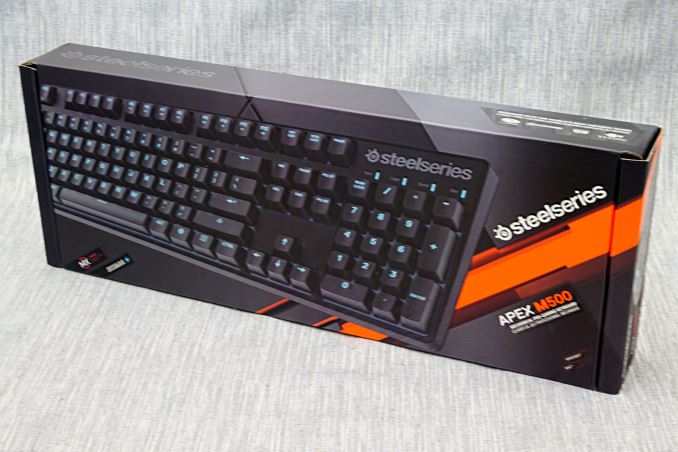
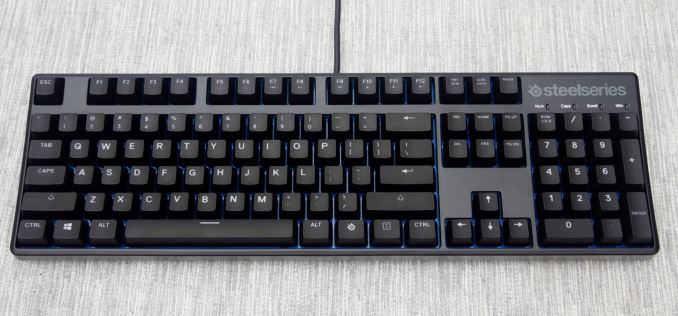
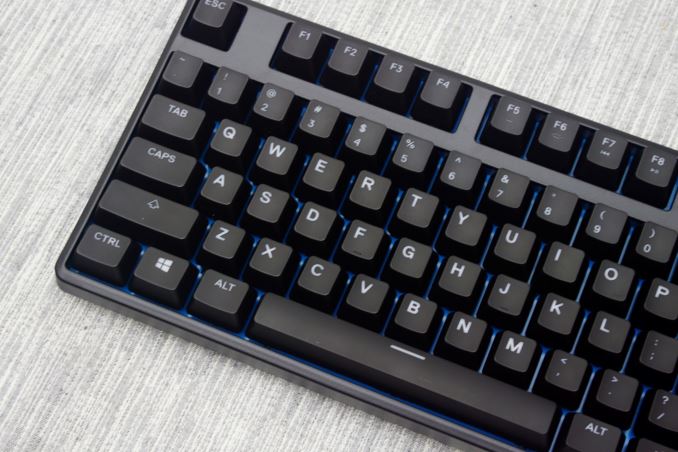
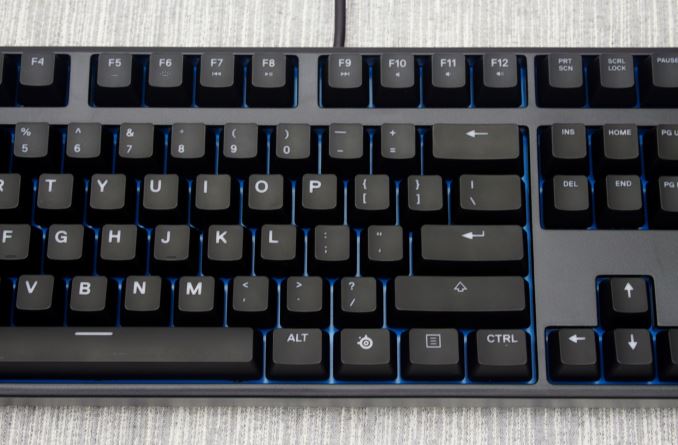
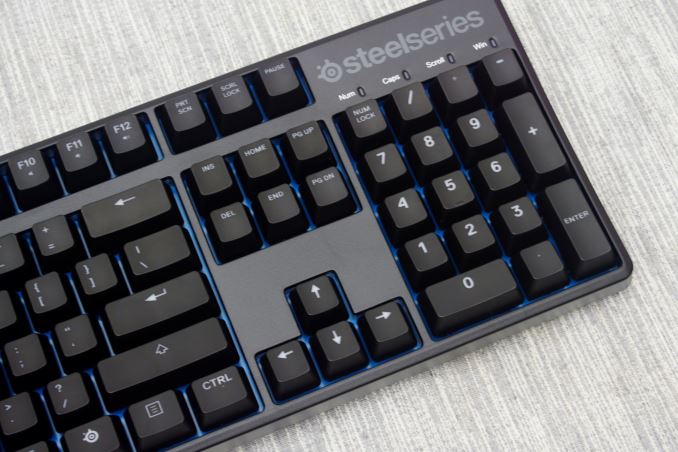
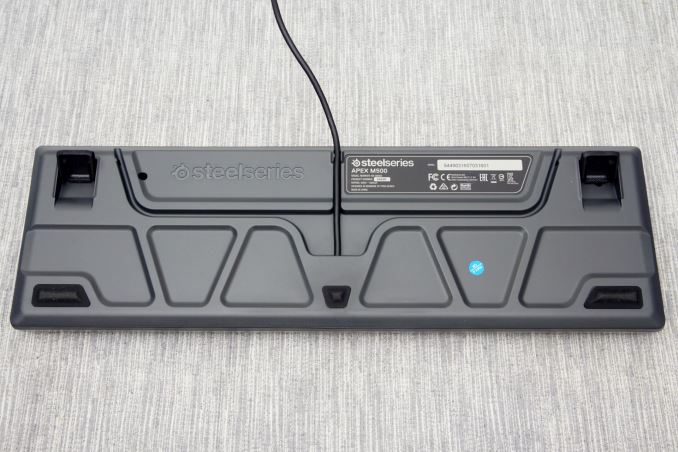


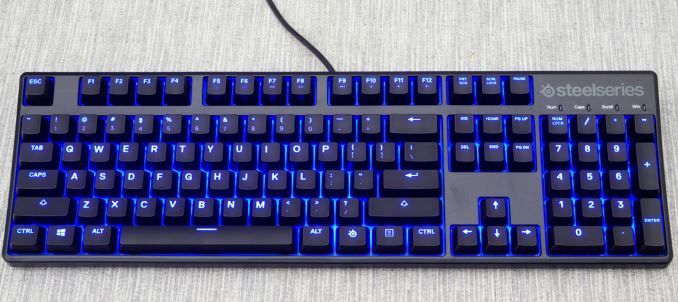
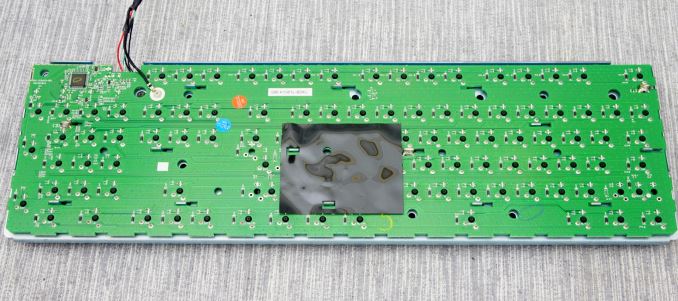
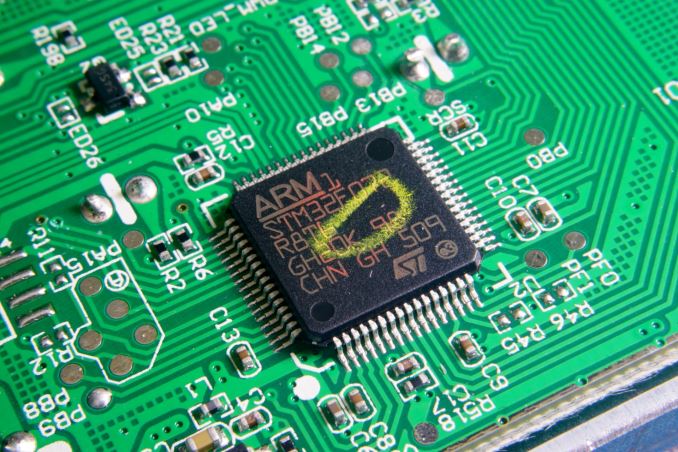








60 Comments
View All Comments
JoeyJoJo123 - Sunday, June 12, 2016 - link
>it has nothing to do with blue being *bad* for you, simply that it is less efficientAnd? I already commented that who the hell cares if it's less efficient or not? The absolute majority of people are buying based on looks alone, not because inefficiencies.
versesuvius - Friday, June 10, 2016 - link
"Even so, the company was a little late into the mechanical keyboards market, as they opted to focus on advanced membrane-based keyboards instead. Until recently, the company has been offering just one mechanical keyboard, the Apex M800 with their own custom QS1 switches." ....Wrong. SteelSeries 7G was a mechanical keyboard with Cherry MX black switches, and was and still is one of the best mechanical keyboards ever made.
http://www.tweaktown.com/reviews/4368/steelseries_...
JoeyJoJo123 - Friday, June 10, 2016 - link
>ISO sized enter keyYeah, nah.
azrael- - Friday, June 10, 2016 - link
All Steelseries keyboards, including their mechanical offerings, have, to my knowledge, also been available in US layout. Why anyone would willingly want that tiny Return key is beyond me though.JoeyJoJo123 - Friday, June 10, 2016 - link
By US layout, I presume you mean ANSI. And secondly, no. the US version of the Steelseries 6G, 6Gv2, and 7G were all offered in the US in the ISO layout.The only thing remarkable is that despite Steelseries being one of the first on the mechanical gaming keyboard bandwagon with the 6G and 7G back in the day (IGN has a review of the 7G dating back to May 16th, 2008, over 8 years ago), this is the FIRST mechanical keyboard they've ever offered with a standard ANSI key layout.
Even after they ditched the ISO layout in the US market, they pushed the awkward double-row spacebar, which again still wasn't standard ANSI key layout.
Why is the standard ANSI key layout important?
Because it's the only keyboard layout that almost every keycap set is almost guaranteed to be offered in. It's incredibly rare to find a full ISO layout keycap set, and even when you can find one, it's much more expensive than a comparable ANSI keycap set.
versesuvius - Saturday, June 11, 2016 - link
ISO ("I" as in International)ANSI ("A" as in American) and (I'm freezin', It is 32 degrees)
By the time you come to appreciate decimal based units of measurements and completely abandon the stupid lb, ft, ... and start freezing at 0 degrees instead of 32 degrees you will also come to appreciate the ISO keyboard layouts too.
JoeyJoJo123 - Saturday, June 11, 2016 - link
Nah. Enjoy being a third-world country.I'll enjoy my superior keyboard standard, which is adopted by more aftermarket keycap manufacturers than any other keyboard "standard" in the world.
Fleeb - Monday, June 13, 2016 - link
"Nah. Enjoy being a third-world country.""Question: How many countries in the world have not officially switched to the SI (International System of Units), or modern metric system?
Answer: Three - The U.S., Liberia, and Burma. "
JoeyJoJo123 - Monday, June 13, 2016 - link
"Question: Which of the following three countries, the U.S., Liberia, and Burma, are first world countries?"Only the U.S.
I find it cute that third-worlders have a habit on trying to rag on the United States for something as completely trivial as a the popular units used in measurements here. Did you know you can type "160 lbs in kg" in Google and it'll automatically calculate that answer for you? As a US citizen, I know that the math involving measurements is the exact same regardless of which units you use; If I need to transform the units to something else, that's just one extra step after the calculation to get it to whatever units I happen to need.
It doesn't matter if it's megabytes/second to megabits/second, feet to meters, etc. It literally takes less than 10 seconds to transform any measurement from any units to another set of units that's needed for the job.
Oh, and enjoy being a third-world country.
MamiyaOtaru - Sunday, June 12, 2016 - link
unlikely.